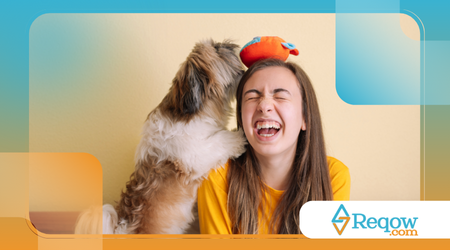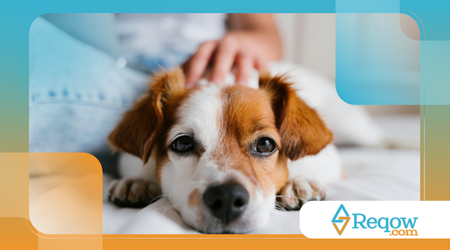Your pet learned, but forgets when you're away from home? Command Generalization Explained

Generalization of commands. It's a familiar scenario for many tutors:
Advertisements
Your dog performs commands perfectly in the living room, but seems deaf and disoriented as soon as the leash is put on for a walk.
This frustration, which many mistakenly attribute to canine stubbornness, has a logical explanation in the world of animal behavior: command generalization.
What is Command Generalization?
THE command generalization is the process by which an animal learns to apply a taught behavior in different contexts, environments and with varied distractions.
In simple terms, it means that what he learned in one place he also knows in another.
Advertisements
The Environment as a Silent Teacher
Your dog associates commands not only with your voice, but also with the context in which they are performed.
A "sit" in the kitchen presents a different set of visual and olfactory stimuli than a "sit" in the park. For the dog, they are different situations.
The Comfort Zone and Its Limits
Dogs are creatures of habit and routine.
Training only at home creates a behavioral comfort zone, limiting the animal's ability to transfer learning to less controlled scenarios.
Read more: Teaching Complex Commands to Intelligent Dogs: How to Challenge Your Pet's Mind
Unexpected Distractions: The Great Challenge
Noises, smells, other animals, and people are distractions that compete for your pet's attention.
In the home environment, these interferences are minimal. Outside, the world opens up in a whirlwind of stimuli.
Why Doesn't Transfer of Learning Happen Naturally?
Think of a child learning to read in their quiet, cozy room. Imagine asking them to read a book in the middle of a rock concert.
Reading, even if mastered, would be compromised by the intensity of the environment. With our dogs, the dynamic is similar.

The Canine Brain and Associations
The canine brain is adept at making associations. If the "stay" command is always practiced with you standing in front of him, he may associate success with your physical proximity.
Moving a few steps away is already a change.
Find out more: How to Teach Your Dog to Deal with Frustration: The Most Overlooked Command in Training
Failure of Gradual Progression
Many tutors don't realize the need to gradually increase the difficulty of training.
New variables, such as noises and people, need to be introduced gradually to build the dog's trust.
Effective Strategies for Command Generalization
The key to success is conscious and progressive training. Don't expect your dog to perform magic; guide him step by step.
Variety of Environments: The Golden Rule
Start at home, but move to a different room. Then move to the backyard.
Then to the quiet sidewalk, and so on. Each new location presents challenges and learning opportunities.
Gradual Introduction of Distractions
First, a mild distraction, like someone passing by on the street. Then, a slightly more intense one, like another dog in the distance.
Increase the level of challenge in a controlled manner, always ensuring your pet's success.
High-Value Rewards in New Situations
To motivate your dog to perform in challenging environments, rewards must be irresistible. Use treats your dog truly loves or a favorite toy.
The “Come” Impeccable Anywhere
Your dog, Bob, readily responds to “come” in the yard. To improve command generalization, start practicing in environments with more stimuli.
Take him to a quiet park during off-peak hours. At first, call him close. Then gradually increase the distance.
Look how interesting: Pets that eat too fast: real risks and how to avoid this dangerous behavior
Then add controlled distractions, such as a friend walking in the distance, and ask the friend to remain neutral while you call Bob.
Change locations and distractions, always praising and rewarding success.

The “Lie Down” in the Midst of Confusion
Mia knows how to lie down instantly at home. For the command generalization, take her to a pet-friendly shopping center on a less busy day.
Start by asking her to "lie down" in a quiet corner. As she demonstrates confidence, move to busier areas, like near a store or where people are talking.
Increase the distractions, but always ensure that she can execute the command, rewarding each successful attempt and each correct answer with enthusiasm.
The Importance of Consistency and Patience
Training is an ongoing process, not a one-time event.
Repetition in different scenarios is essential for solidifying learning and for your dog to become an expert anywhere. Be patient and understanding.
The Canine Learning Curve
Just like us, dogs have their own learning curves. What's easy for one may be challenging for another. Your pet's individuality should be respected.
Small Steps, Big Victories
Celebrate every small achievement. Did your dog respond to a command at the park, even when there was a loud car? That's progress and deserves recognition.
Relevant Data on Generalization
A study published in 2022 by researchers at the University of Lincoln in the United Kingdom analyzed the relationship between the training environment and the performance of service dogs.
Thus, it was demonstrated that dogs trained in a variety of environments and with different levels of distraction had a significantly higher success rate in executing commands in new and challenging situations.
This reinforces the need for diversified training to achieve command generalization.
Table: Levels of Difficulty in Generalization
| Level | Environment | Distractions | Recommended Reward |
| Basic | House (various rooms) | Minimal (none or few) | Mid-priced snacks |
| Intermediary | Backyard, quiet sidewalk | Light (few noises, person standing at a distance) | High-value snacks |
| Advanced | Busy park, street with traffic | Moderate (other dogs, children, cars) | High-value snacks, toys |
| Expert | Urban center, events with many stimuli | High (crowd, loud noises) | High-value treats, prolonged playtime |
A Confident Dog Anywhere
THE command generalization It is not a luxury, but a necessity for the safety and well-being of your dog.
An animal that responds well to different situations is a happier and more secure animal. Investing time in command generalization is investing in your partner's quality of life.
By taking a structured and patient approach, you not only strengthen obedience, but also build richer communication and an unbreakable bond with your pet.
After all, we don't want them to "forget" what they learned, we want them to understand that the whole world is their classroom, right?
Frequently Asked Questions
What do I do if my dog freezes or doesn't obey me in a new environment?
Take a step back. If your current environment is too challenging, move to a place with fewer distractions.
Reduce the distance or time required to execute the command. The important thing is that he gets it right and is rewarded.
How long does it take for a dog to generalize a command?
This varies greatly from dog to dog and the command in question.
Some people can develop quickly, others take weeks or months. Daily consistency is more important than the length of each session.
Do I need to use treats forever?
Not necessarily. Over time, as the command solidifies and the dog understands that it's worth performing, you can begin alternating reinforcements, introducing verbal praise, petting, or play as rewards.
Is it possible to generalize commands to older dogs?
Yes, definitely! Dogs of all ages are capable of learning and generalizing commands.
The process may be a little slower for older dogs who have not had this prior exposure, but the learning ability remains.
Should I train all commands everywhere?
Ideally, the most important commands (such as “come”, “stay”, “sit”) should be generalized as much as possible.
Other, less crucial commands may not require as much variety in environments. Use common sense and the relevance of the command.
